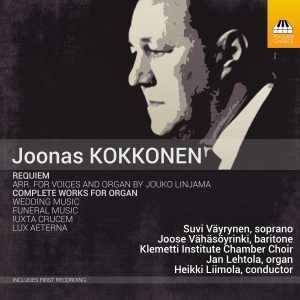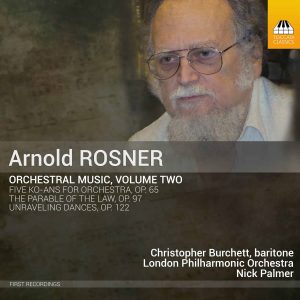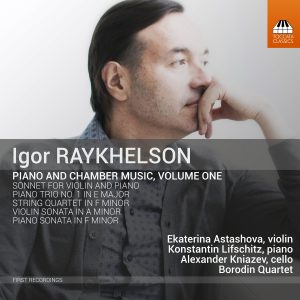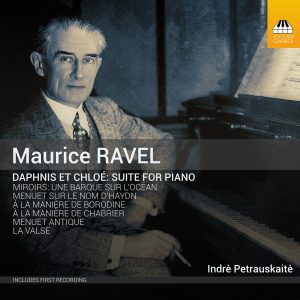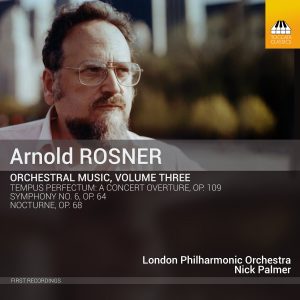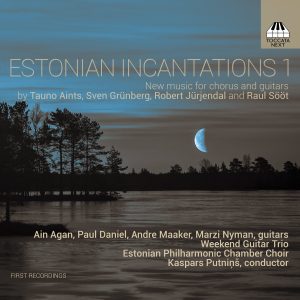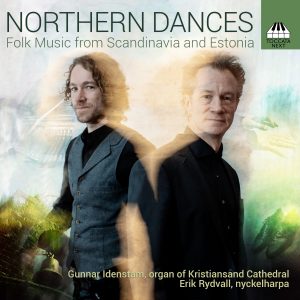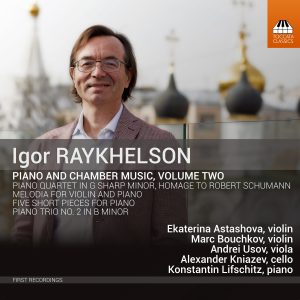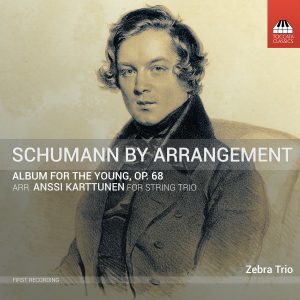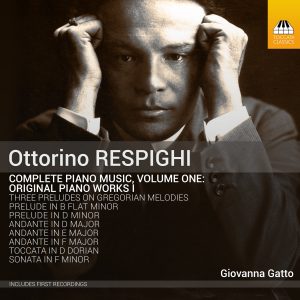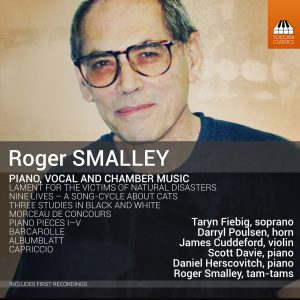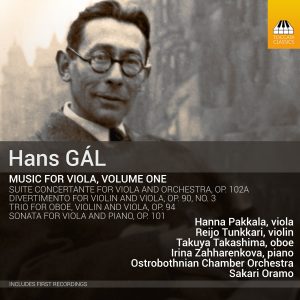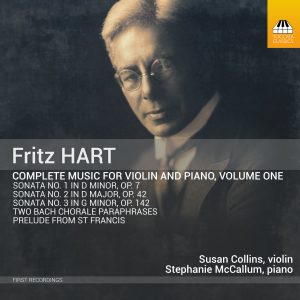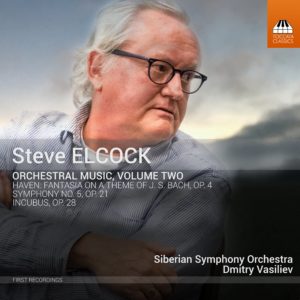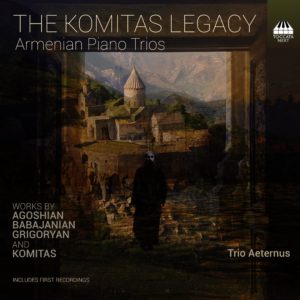Search Results for "C-ARSCC-2208 Latest Exam Question ✉ C-ARSCC-2208 Pass Guaranteed 🚴 New Guide C-ARSCC-2208 Files 🦞 Copy URL 「 www.pdfvce.com 」 open and search for ⮆ C-ARSCC-2208 ⮄ to download for free ☂Exam C-ARSCC-2208 Introduction" – Page 4
Showing results for arsi 4208 latest exam question £9 pass guaranteed £9 new guide files £9 copy url www croce com open search £9 £9 download free areas introduction croco chars 4208 arsi 4208 chars 4208 4208 4208
Joonas Kokkonen: Requiem; Complete Works for Organ
The music of Joonas Kokkonen (1921–96), one of the most important Finnish composers after Sibelius, radiates warmth and light. His limited output is largely introvert in character but also contains moments of grandeur and rhythmic energy. Kokkonen’s Requiem (1980–81), written in memory of his first wife, is both a powerful choral symphony and a tender, moving embodiment of consolation. Originally scored for large orchestra, the Requiem is heard here in a new version for organ intended to bring the work within the reach of smaller forces. This first recording is complemented by the first complete recording of Kokkonen’s four works for solo organ.
Suvi Väyrynen, soprano Tracks 3, 4, 6, 8-11
Joose Vähäsöyrinki, baritone Tracks 3, 4, 6, 8-11
Klemetti Institute Chamber Choir Tracks 3-11
Jan Lehtola, organ of Paavalinkirkko, Helsinki
Heikki Liimola, conductor Tracks 3-11
Arnold Rosner: Orchestral Music, Volume Two
The musical language of the New York-based Arnold Rosner (1945–2013) clothes the modal harmony and rhythm of pre-Baroque polyphony in rich Romantic colours, producing a style that is instantly recognisable and immediately appealing. This second Toccata Classics album of his orchestral music contrasts the high-spirited Unraveling Dances – a rhapsody with more than a nod to Ravel’s Bolero – with the powerful symphonic suite Five Ko-ans for Orchestra and Rosner’s dramatic, dark, hieratic setting of Kafka’s The Parable of the Law for baritone and orchestra.
London Philharmonic Orchestra
Nick Palmer, conductor
Christopher Burchett, baritone (Track 7)
Igor Raykhelson: Piano and Chamber Music, Volume One
In his early days the composer-pianist Igor Raykhelson – born in Leningrad in 1961, once a New York resident and now based in Moscow – studied both classical and jazz piano. Those influences have combined to create a uniquely personal, Rachmaninov- plays-the-blues Neo-Romantic style: not only is Raykhelson unafraid to write a good tune – it’s clear right away whose tune it is. And in his chamber and instrumental works, the intimate, parlando manner that Raykhelson absorbed from jazz becomes particularly effective.
Borodin Quartet
Ekaterina Astashova, violin (Tracks 1 – 2)
Alexander Kniazev, cello (Track 1)
Konstantin Lifschitz, piano (Track 1 – 9)
Maurice Ravel: Piano Music
Almost every pianist, it seems, wants to record Ravel, but virtually all of them have overlooked a treasure trove of his solo-piano music: the composer’s short score for Daphnis et Chloé. Some parts of it are unplayable by a single pair of hands, but with judicious arrangement this working draft can be mined for diamonds. Only a handful of musicians have made their own suites for solo piano; here the Lithuanian pianist Indrė Petrauskaitė, carefully observing Ravel’s original textures, has produced something new: a 40-minute concert suite of unsuspected Ravel for solo piano that also respects the dramatic outline of the original ballet. The other, more familiar works here extend the ideas of antiquity and transcription.
Indrė Petrauskaitė, piano
Arnold Rosner: Orchestral Music, Volume Three
The musical language of the New York-based Arnold Rosner (1945–2013) had its roots in the modal harmony and rhythm of pre-Baroque polyphony and evolved in an array of unusual directions, producing a style that is instantly recognisable and immediately appealing – as can be heard in the three works on this recording. Rosner’s Nocturne suggests the immensity – and the implacable violence – of outer space, whereas his overture Tempus Perfectum has its starting point in Renaissance dance. The monumental Sixth Symphony opens with music of volcanic ferocity and vehemence; the central Adagio then provides an island of troubled calm before the dignified opening of the finale presages a symphonic Allegro of wild, freewheeling energy; only when its immense force is spent does this powerful masterpiece sink to an uneasy close.
London Philharmonic Orchestra
Nick Palmer
Estonian Incantations 1
This remarkable recording explores an unsuspected soundworld – that of guitars, electric and acoustic, and chorus – in new works by four contemporary Estonian composers, whose styles range from the primitivism of ancient Estonian magical incantations via plainsong-like meditation to electronic sampling.
Marzi Nyman, guitar (Tracks 1 – 2, 6)
Andre Maaker, seven-string acoustic guitar (Tracks 3, 6)
Weekend Guitar Trio (Tracks 4, 6)
Ain Agan, fretless guitar (Tracks 5, 6)
Paul Daniel, electric guitar (Tracks 5, 6)
Annika Lõhmus, vocal (Track 5)
Estonian Philharmonic Chamber Choir
Kaspars Putniņš, conductor
Robert Jürjendal, electric guitar, electronics
Tõnis Leemets, electric guitar, electronics
Mart Soo, electric guitar, electronics
Northern Dances: Folk Music from Scandinavia and Estonia
This sparkling collection of folk dances from Norway and Sweden, offset by two Estonian chorales and three improvisations, comes from two of the finest practitioners of this kind of material: Gunnar Idenstam, playing on the new Klais organ of Kristiansand Cathedral in southern Norway, and Erik Rydvall, on the nyckelharpa, the keyed folk fiddle of Sweden. The combination of rhythmic vigour, the harmonic ambiguity of Scandinavian folk music and the huge range of instrumental colour gives these tunes – all in spontaneous, semi-improvised performances – an irresistible and immediate appeal.
Gunnar Idenstam, organ of Kristiansand Cathedral
Erik Rydvall, nyckelharpa
Igor Raykhelson: Piano & Chamber Music, Vol. 2
In his early days the composer-pianist Igor Raykhelson – born in Leningrad in 1961, once a New York resident and now based in Moscow – studied both classical and jazz piano. Both influences have combined to create a uniquely personal, Rachmaninov-plays-the-Blues Neo-Romantic style: not only is Raykelson unafraid to write a good tune- it’s clear right away whose tune it is. And in his chamber and instrumental works, the parlando manner that Raykhelson absorbed from jazz becomes particularly effective. Raykhelson’s chamber music is usually written for his friends, and here he is joined by some of Russia’s finest musicians, including the cellist Alexander Kniazev and the pianist Konstantin Lifschitz- and the violinist in Raykhelson’s lyrical ‘Melodia’ is his wife, Ekaterina Astashova.
Ekaterina Astashova, violin
Marc Bouchkov, violin
Andrei Usov, viola
Alexander Kniazev, cello
Konstantin Lifschitz, piano
Schumann by Arrangement
Album for the Young, Op. 68. transcr. string trio by Anssi Karttunen
Schumann’s ‘Album fur das Jugend,’ Op. 68, of 1848 appears to be a collection of simple teaching pieces for children. But its unassuming exterior hides a wealth of interconnected references: to Bach and to William Blake (whose ‘Songs of Innocence and Experience’ it shadows), and to the life of the Romantic artist as reflected in nature and the passage of the seasons. Anssi Karttunen’s transcription for string trio brings a textural subtlety that enhances the unsuspected layers of meaning in Schumann’s modest miniatures. The Zebra Trio consists of the Austrian violinist Ernst Kovacic, Canadian violist Steven Dann and Finnish cellist Anssi Karttunen, each bringing a vast experience in chamber music, in different styles and in working with living composers to the world of the string trio. The Zebra Trio has always mixed familiar masterpieces with new works and transcriptions, combining all of these in creative ways in their concerts.
Zebra Trio
Ottorino RESPIGHI: Complete Piano Music, Volume One
Respighi’s orchestral works are some of the most popular in the mainstream repertoire. His output of piano music, by contrast, is as good as unknown, and this new Toccata Classics series will be the first ever to present it all: original works and transcriptions alike, for solo piano, piano four hands and two pianos. This first instalment crowns his earliest keyboard compositions with the magisterial Three Preludes on Gregorian Melodies, miniature Lisztian tone-poems presented with Busonian grandeur.
Giovanna Gatto, piano
Roger SMALLEY: Piano, Vocal and Chamber Music
Roger Smalley (1943–2015) made his mark, first in his native Britain and then in Australia, as composer, pianist, conductor, writer, academic and teacher. Although as performer and commentator he was at the forefront of musical modernism, he was also very fond of nineteenth-century Romanticism, and much of his music bridges the gap between old and new, retaining its roots in the past while reflecting the concerns of his own time, as the works on this album demonstrate.
Taryn Fiebig, soprano (Tracks 2–10)
Darryl Poulsen, horn (Tracks 22)
James Cuddeford, violin (Tracks 11)
Daniel Herscovitch, piano (Track 1)
Scott Davie, piano (Tracks 2–10)
Roger Smalley, tam-tams (Track 22)
Hans GÁL: Music for Viola, Volume One
Hans Gál (1890–1987) wrote extensively for the viola, including several remarkable works dating from the first decade of his new life in Edinburgh, where he took refuge after the Nazis seized power in his native Austria. His poignant Suite Concertante for viola and orchestra – effectively a concerto for the instrument – is joined here by three substantial chamber works, all infused with Gál’s trademark lyricism.
Hanna Pakkala, viola
Reijo Tunkkari, violin (Tracks 5-8, 12-15)
Irina Zahharenkova, piano (Tracks 9–11)
Takuya Takashima, oboe (Tracks 12–15)
Ostrobothnian Chamber Orchestra (Tracks 1–4)
Sakari Oramo, conductor (Tracks 1–4)
Fritz HART: Complete Music for Violin and Piano, Volume One
The composer and conductor Fritz Hart (1874–1949) led a peripatetic life: London-born, he moved to Australia to tour travelling productions of musicals there and in New Zealand. He soon became a formative figure in Australian musical life as teacher and conductor, but in 1936 left to become the first professor of music at the University of Hawai‘i and permanent conductor of the Honolulu Symphony Orchestra. Hart‘s three violin sonatas – poised but passionate – reveal a musical language influenced by Debussyan Impressionism but also coloured by his own Celtic roots.
Stephanie McCallum, piano
Susan Collins, violin
Music For My Love Bundle
CELEBRATING THE LIFE OF SOMEONE SPECIAL – 100+ NEW WORKS FOR STRING ORCHESTRA
When Yodit Tekle was diagnosed with stomach cancer in late 2014, her partner, Martin Anderson, who runs Toccata Classics, asked a few composer friends to write some music for strings to bring her comfort in her illness. As her life slipped away, he had the idea that she might be remembered in music and so he began to commission other pieces for string orchestra in her memory. To his surprise, almost everyone he asked generously agreed, and so the project snowballed: there are now over 100 composers who have written or agreed to write for it – in an undertaking that is probably unique in the history of music.
(Learn more at musicformylove.org)
Included in this bundle:
Steve ELCOCK: Orchestral Music, Volume Two
This second volume of orchestral music by the English composer Steve Elcock (b. 1957), long since resident in France, brings three powerful works all with their origins in earlier pieces. Incubus examines the terrors of nightmare-riven sleep in a vigorous symphonic essay based on a movement from Elcock’s string quartet Night after Night. The impulse behind Haven, an expansive and surprisingly muscular fantasy, is the Sarabanda theme from Bach’s First Partita for solo violin. And Elcock’s Fifth Symphony takes its cue from the most famous of all Fifth Symphonies, re-examining Beethoven’s structural logic in Elcock’s own musical language to produce a volcanic new Fifth, its charge of wild energy husbanded to maximum dramatic effect.
Siberian Symphony Orchestra
Andrey Lopatin, violin (Track 2)
Grigorii Vever, clarinet (Track 5)
Evgeny Plaksin, horn (Track 5)
Dmitry Vasiliev, conductor
FIRST RECORDINGS
The Komitas Legacy: Armenian Piano Trios
Soghomon Soghomonian (1869–1935) took the name Komitas (or Gomidas) when he was ordained a priest in 1894; a year later he became Komitas Vardapet (doctor of theology) – one of the two names by which he is known to history. The other is ‘father of Armenian music’, since he collected thousands of songs from his compatriots, his fieldwork preserving and identifying the accent which makes the works of Armenian composers readily identifiable – as these piano trios prove: one twentieth-century classic and three new works, one of which completes the circle by recasting six of Komitas’ own folksong arrangements.
Trio Aeternus
Alexander Stewart, violin
Varoujan Bartikian, cello
João Paulo Santos, piano
*First recordings
Stay In the Know
JOIN THE TOCCATA NEWSLETTER
"*" indicates required fields
By visiting our site, you agree to our privacy policy regarding cookies, tracking statistics, etc.
